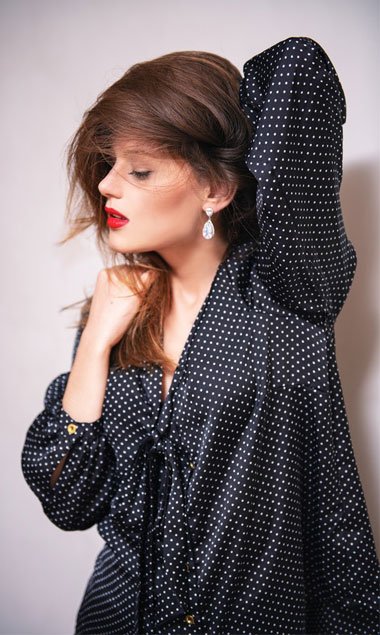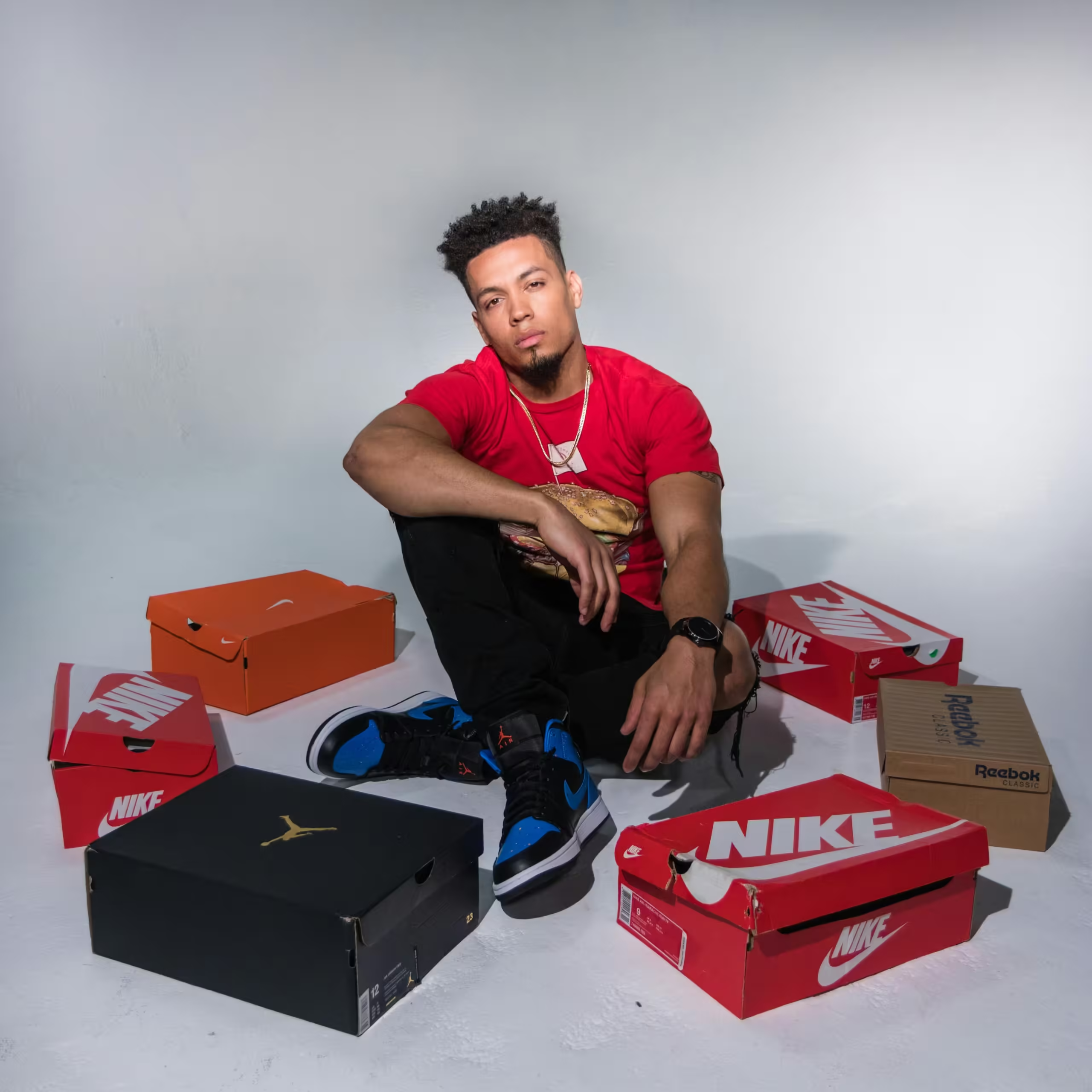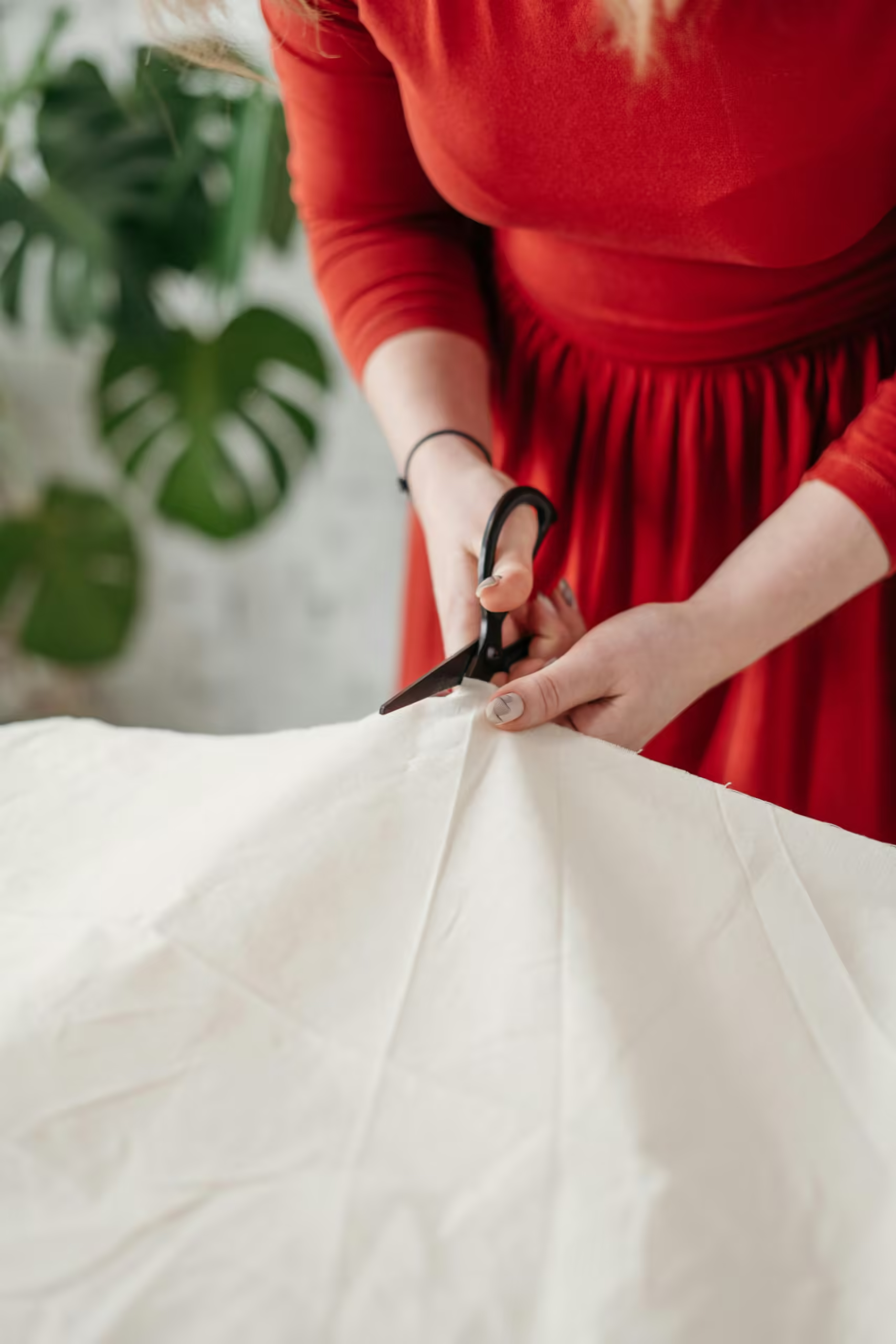So You Want to Start a Fashion Blog? What You Need to Really Know
Fashion blogging has emerged as a dynamic and increasingly popular avenue for individuals passionate about style, trends, and personal expression. With the digital landscape flourishing, fashion blogs offer an exceptional platform to share unique fashion perspectives, connect with a global audience, and explore lucrative opportunities. Whether you’re an aspiring fashionista or an experienced stylist, the world of fashion blogging provides a space to showcase your creativity and influence the fashion community.
One of the most alluring aspects of starting a fashion blog is the ability to communicate your personal style and vision. Through engaging content, compelling visuals, and authentic storytelling, bloggers can establish a distinct voice that resonates with readers worldwide. Moreover, the interactive nature of blogs allows for real-time feedback and connection with followers, fostering a sense of community and shared passion.
Another significant advantage of fashion blogging is the potential for collaboration with brands and designers. As you build your blog and gain visibility, opportunities to partner with fashion companies for sponsored posts, product reviews, and exclusive collaborations become more accessible. These partnerships not only enhance your blog’s credibility but also provide financial incentives and access to the latest fashion trends and products.
However, launching a successful fashion blog demands more than just a flair for fashion. It requires dedication, consistency, and a genuine passion for the industry. From developing a unique content strategy to mastering the technical aspects of blogging, there are several key elements to consider. This comprehensive guide will equip you with the essential knowledge and tools needed to navigate the competitive landscape of fashion blogging and establish a thriving online presence.
Finding Your Niche
Identifying a specific niche is paramount when starting a fashion blog. The fashion industry is vast and diverse, encompassing a myriad of styles, trends, and subcultures. By honing in on a particular niche, you can distinguish your blog from the multitude of others and foster a loyal, dedicated audience. Popular niches within the fashion realm include sustainable fashion, high-end luxury, streetwear, and plus-size fashion. Each of these areas offers unique opportunities to connect with different segments of fashion enthusiasts.
Sustainable fashion, for instance, appeals to environmentally conscious readers who value eco-friendly practices and ethical production. High-end luxury attracts those who are interested in designer brands, exclusive collections, and the latest runway trends. Streetwear, characterized by its casual, urban aesthetic, resonates with younger audiences who follow the latest in sneakers, hoodies, and graphic tees. Plus-size fashion serves an important and often underrepresented demographic, catering to individuals seeking stylish and well-fitting clothing options.
Narrowing your focus not only helps in attracting a dedicated readership but also makes your blog more appealing to brands looking for targeted partnerships. Brands often seek influencers who align with their values and target market, and a well-defined niche can make you a prime candidate for collaborations and sponsorships.
To discover your niche, reflect on your personal interests and expertise. Consider what aspects of fashion excite you the most and where you have the most knowledge. Additionally, research market demand to identify gaps or underserved areas within the fashion blogosphere. Utilize tools such as Google Trends, social media insights, and competitor analysis to gauge interest levels and potential audience size for various niches.
Ultimately, your passion and familiarity with your chosen niche will shine through in your content, making your fashion blog a compelling and authoritative resource for readers. By focusing on a specific niche, you can carve out a unique space within the fashion industry and build a successful, influential blog.
Setting Up Your Blog
Establishing a successful fashion blog begins with selecting the right blogging platform. WordPress and Squarespace are popular choices due to their user-friendly interfaces and extensive customization options. WordPress, in particular, offers a wide variety of plugins and themes specifically designed for fashion bloggers, enhancing both functionality and aesthetics. When you choose a platform, consider your technical proficiency and the level of control you desire over your blog’s design and features.
Your blog’s domain name is its digital identity, so it should be memorable and representative of your brand. Opt for a domain that is easy to spell, pronounce, and remember. Many hosting services, such as Bluehost and SiteGround, offer domain registration as part of their packages. Reliable hosting is crucial to ensure your fashion blog runs smoothly and is accessible to your audience at all times.
Performance optimization is essential for a seamless user experience. Essential plugins, such as Yoast SEO for search engine optimization and WP Super Cache for faster load times, can significantly improve your blog’s performance. Additionally, tools like Google Analytics help you track your blog’s traffic and understand your audience’s behavior, allowing for data-driven decisions to enhance your content strategy.
Responsive design is another critical aspect of setting up a fashion blog. Given that a significant portion of users access blogs via mobile devices, your chosen theme must be mobile-friendly. Themes like Astra and Divi are highly recommended for their responsive designs and customizable features that reflect your unique brand identity. A visually appealing theme not only attracts visitors but also keeps them engaged, encouraging longer visits and repeat traffic.
By focusing on these technical steps, you lay a solid foundation for your fashion blog, ensuring it is both functional and visually appealing. This meticulous setup process will help you create an engaging platform that resonates with your target audience and supports your growth in the competitive fashion blogging landscape.
Creating Quality Content
Creating high-quality content is the cornerstone of a successful fashion blog. Engaging your audience requires not only passion for fashion but also a strategic approach to content creation. There are various forms of content that can captivate your readers, from outfit posts and styling tips to trend reports and personal stories.
Outfit posts are a staple in the fashion blogging world. By showcasing your unique style, you provide inspiration to your readers. Ensure that your photos are high-quality and well-lit, as visual appeal is crucial in fashion blogging. Styling tips are another valuable content type. Share your expertise on how to mix and match pieces, accessorize effectively, or dress for different occasions. This type of content positions you as a trusted guide in the fashion community.
Trend reports keep your audience informed about the latest developments in the fashion industry. Staying updated with seasonal trends, runway shows, and new collections will help you produce timely and relevant content. Personal stories can also enrich your blog by adding a layer of authenticity. Share your fashion journey, challenges, and triumphs to build a deeper connection with your readers.
Writing compelling headlines is essential to attract readers. Your headlines should be clear, intriguing, and reflective of the content. Use action verbs and keywords related to fashion to enhance searchability. Additionally, integrating multimedia elements like videos and infographics can make your blog more dynamic and engaging. Video tutorials on makeup or styling, as well as infographics summarizing fashion trends, can provide significant value to your audience.
Consistency in posting is vital to maintain and grow your readership. Develop a content calendar to plan your posts and ensure regular updates. While consistency is key, maintaining a unique voice will differentiate your blog from others. Let your personality shine through your writing to create a distinct and memorable brand identity.
Understanding the basics of Search Engine Optimization (SEO) is crucial for the success of any fashion blog. SEO plays a pivotal role in driving organic traffic, which is essential for expanding your readership and enhancing your blog’s visibility. One of the foundational practices of SEO is keyword research. Identifying the right keywords that your target audience is searching for can significantly improve your blog’s chances of appearing in search engine results. Tools like Google Keyword Planner or SEMrush can assist in finding relevant keywords that resonate with your content.
On-page optimization is another critical aspect. This includes optimizing your title tags and meta descriptions to ensure they are compelling and include your primary keywords. Title tags should be concise and informative, while meta descriptions should provide a brief summary of your content, enticing users to click through to your blog.
Creating SEO-friendly content is also paramount. This involves writing high-quality, original posts that are valuable to your readers. Incorporate your chosen keywords naturally within the content, but avoid keyword stuffing, as this can harm your rankings. Use headings and subheadings to structure your content, making it easier for both readers and search engines to navigate.
Internal and external linking strategies can further enhance your SEO efforts. Internal links help keep visitors on your site longer by directing them to related content within your blog. External links, on the other hand, can lend credibility to your posts by referencing reputable sources. Both types of links are beneficial for SEO.
Image optimization is often overlooked but is equally important. Use descriptive file names and include alt text for all images to improve search engine understanding of your content. This can also make your blog more accessible to users with visual impairments.
Leveraging social media platforms can significantly boost your blog’s visibility and drive traffic. Sharing your posts on platforms like Instagram, Pinterest, and Twitter can attract a broader audience and foster engagement.
Finally, tools like Google Analytics and Google Search Console are invaluable for tracking your blog’s performance. These tools provide insights into your audience’s behavior, helping you refine your SEO strategies and improve your blog’s effectiveness over time.
Building Your Brand and Audience
Creating a successful fashion blog begins with establishing a strong personal brand and growing a dedicated audience. A consistent aesthetic and voice are crucial components of your brand identity, setting you apart in the saturated world of fashion blogging. Ensure that your visuals, from blog posts to social media content, reflect a cohesive look and feel. This consistency helps in building recognition and trust with your audience.
Social media channels play a pivotal role in promoting your fashion blog and engaging with followers. Platforms like Instagram, Pinterest, and TikTok offer unique opportunities to showcase your style and connect with a wider audience. Utilize Instagram for its visual appeal, Pinterest for driving traffic to your blog through pins, and TikTok for creating engaging, short-form videos that highlight your fashion tips and trends. Regularly posting high-quality content and interacting with your followers through comments and direct messages can significantly boost your visibility and engagement.
Collaborations and networking are essential strategies for expanding your reach. Partnering with other fashion bloggers, brands, or influencers can introduce your blog to new audiences and create mutually beneficial relationships. Attending fashion events, whether virtual or in-person, allows you to network with industry professionals and stay updated on the latest trends. These connections can lead to valuable opportunities, such as guest blogging, sponsored content, and joint ventures.
Maintaining a connection with your audience is also vital, and email newsletters are an effective tool for this purpose. Regularly updating your subscribers with exclusive content, special offers, and personal insights can keep them engaged and loyal. Ensure that your newsletters are visually appealing and provide value to your readers, whether through fashion tips, behind-the-scenes looks, or early access to new blog posts.
By focusing on building a strong brand, leveraging social media, collaborating with others in the industry, and maintaining a direct line of communication with your audience, you can lay a solid foundation for a successful fashion blog.
Monetizing Your Blog
Monetizing a fashion blog involves exploring various revenue streams to create a sustainable business model. One of the most common methods is through sponsored posts. Brands often pay bloggers to write about their products or services, leveraging the blogger’s audience for exposure. To attract such opportunities, having a well-crafted media kit is essential. This document should outline your blog’s statistics, audience demographics, and previous collaborations, making it easier for brands to assess the potential value of partnering with you.
Affiliate marketing is another lucrative option. By promoting products through unique affiliate links, bloggers can earn a commission on sales generated through their referrals. It’s vital to choose affiliate programs that align with your blog’s niche and audience interests to maintain authenticity and trust. Additionally, selling products or services directly through your blog can be highly profitable. This could range from branded merchandise to fashion consulting services, allowing you to capitalize on your expertise and brand identity.
Display advertising offers another revenue stream. By incorporating ads from networks like Google AdSense, you can earn money based on the number of impressions or clicks these ads receive. While this method can be less lucrative than others, it provides a steady stream of passive income, especially as your blog’s traffic grows.
Negotiating contracts with brands requires a strategic approach. Clearly outline your deliverables, payment terms, and timelines to avoid misunderstandings. Always maintain transparency with your audience by disclosing sponsored content and affiliate links. This not only adheres to legal guidelines but also builds trust with your readers, fostering a loyal community.
Diversifying income streams is crucial to creating a sustainable fashion blog. Relying on a single source of revenue can be risky, especially in the fast-evolving digital landscape. By exploring multiple monetization methods, you can ensure a more stable and resilient business model, allowing your fashion blog to thrive in the long term.
Staying Inspired and Avoiding Burnout
In the competitive world of fashion blogging, maintaining creativity and avoiding burnout are paramount. It’s easy to get caught up in the rapid pace of content creation, but staying inspired requires a mindful approach. One effective strategy is to follow other fashion influencers. Engaging with their content can provide fresh perspectives and spark new ideas for your own fashion blog. Additionally, attending industry events such as fashion shows, trade fairs, and networking gatherings can offer firsthand insights into emerging trends, fostering a deeper connection to the fashion community.
Continuous learning is another key to sustaining inspiration. The fashion industry is ever-evolving, and staying updated with the latest developments can keep your content relevant and exciting. Subscribe to fashion magazines, read industry reports, and take online courses to expand your knowledge base. By immersing yourself in the fashion world, you’ll find a constant stream of ideas to incorporate into your blog.
Equally important is the balance between work and personal life. Fashion blogging can be demanding, and without proper boundaries, it can lead to burnout. Take regular breaks to recharge, and don’t hesitate to step away from your blog temporarily if needed. This time away can rejuvenate your creativity and help you return with a fresh perspective.
Setting realistic goals is crucial for long-term success. Outline achievable milestones and celebrate small achievements along the way. This not only keeps you motivated but also provides a sense of accomplishment. Remember, building a successful fashion blog is a marathon, not a sprint.
In conclusion, staying inspired and avoiding burnout in fashion blogging requires a balanced approach. By following other influencers, attending events, continuously learning, and maintaining a healthy work-life balance, you can sustain your creativity and passion for fashion blogging. Set realistic goals, celebrate your progress, and enjoy the journey of creating engaging and inspiring content for your audience.
Share this content:




 Italiano
Italiano English
English Español
Español